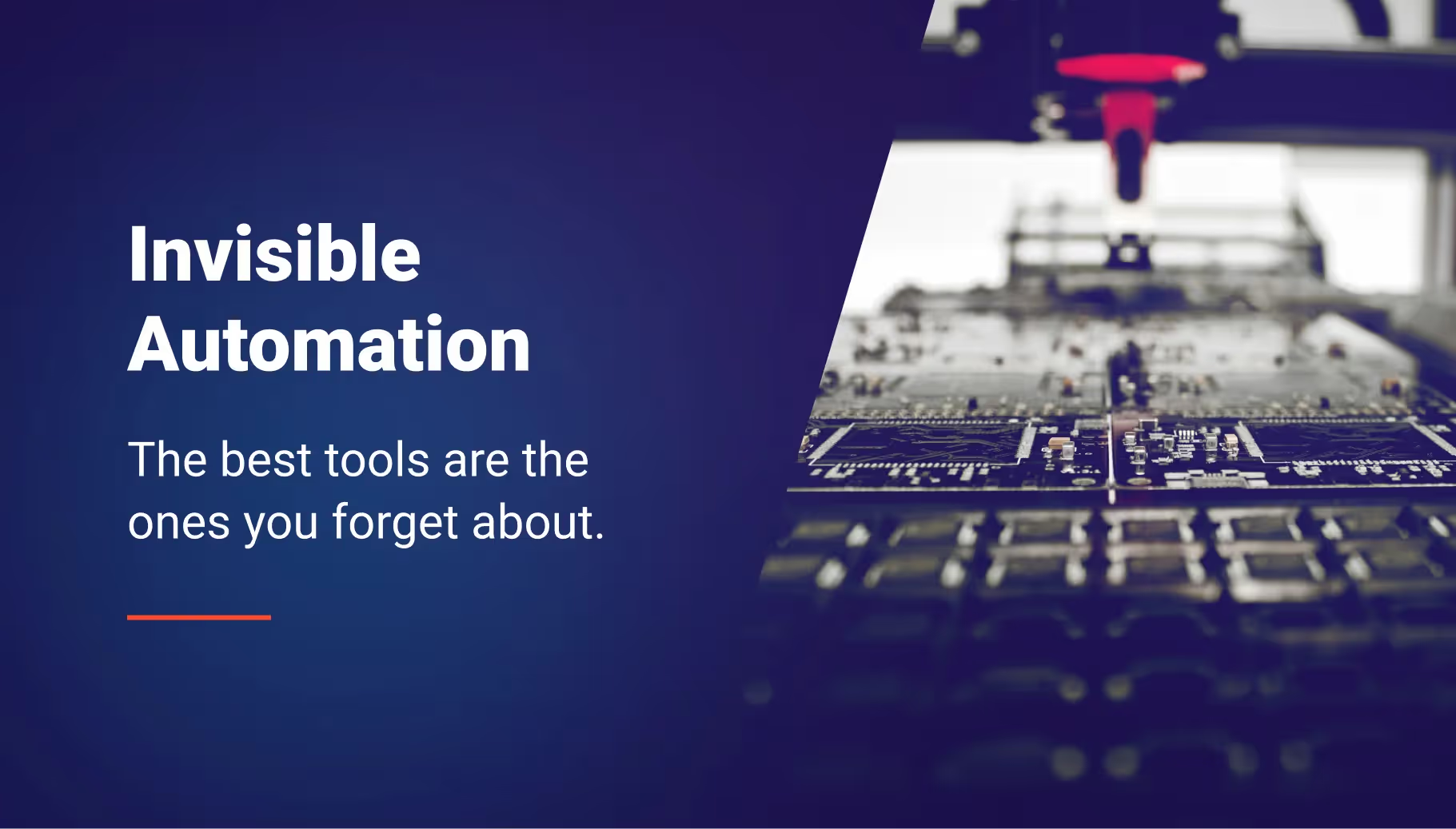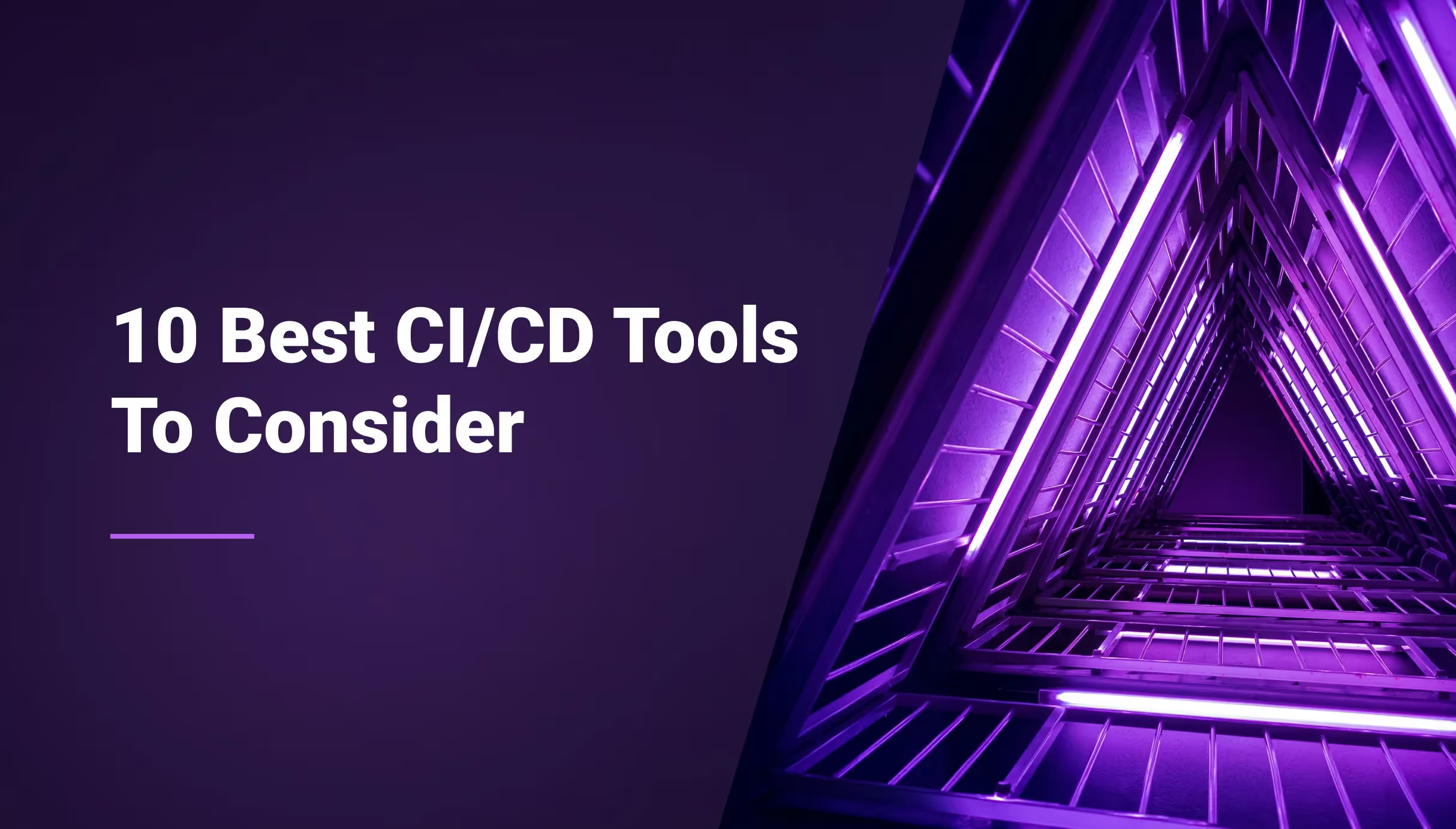
Invisible Automation: The Best Tools Are The Ones You Forget About



Automation in software development and infrastructure shouldn’t be something we celebrate because it’s visible or complex—it should be something that works so smoothly, we forget it’s even there. This perspective is not just valid for DevOps; it should be the case on how we think, build and scale technology.
Why automation shouldn’t be the focus: lessons from the Past
To understand the value of invisible automation, let’s look at industries that have embraced this concept long before DevOps. The automotive industry offers a great example. In the early 1900s, Henry Ford revolutionized manufacturing with the assembly line (increasing production by 1,000% while reducing costs by 60%). The goal wasn’t just speed—it was to make the production process so efficient that workers didn’t need to focus on each individual task. The work was simplified, standardized, and automated to the point where it became almost invisible to the workers. They didn’t need to think about how each part came together—they simply did their job.

The same principle should be applied for software development. The true value of automation in DevOps isn’t about making developers focus on the process of managing environments or deployments. It’s about making all of that so seamless that the developers can focus on what they do best: building and improving the product. The infrastructure should be the silent enabler, not the focal point. Much like Ford’s assembly line revolutionized manufacturing, automation in DevOps can simplify processes to the point where developers no longer need to focus on the mechanics of the system.
Another industry where automation is invisible is robotics. In modern manufacturing, robots are used to handle repetitive or dangerous tasks. But the best robots don’t demand attention. They’re not there to make a statement—they’re designed to be efficient, effective, and unobtrusive. The goal is for the robots to integrate into the process smoothly, improving productivity and reducing error rates without requiring constant human oversight.
Automation in DevOps: making complex tasks disappear
Fast forward to today, and we see this same idea applied in DevOps. Tools like Kubernetes, Docker, and automated cloud platforms handle the heavy lifting of deployment, scaling, and cloud management. While the mentioned tools might remain complex by nature, the real power lies in how they abstract away much of the complexity from developers. But still the best automation tools in DevOps don’t aim to eliminate complexity entirely—they aim to make it invisible to the users. The most effective tools allow developers to focus on building features and delivering product updates, without getting bogged down in the technical details of infrastructure management. Even if the underlying systems are complex, the tools should feel seamless, integrating effortlessly into the workflow so developers can continue innovating. The more seamless and effortless this integration, the more powerful the tool becomes.
Why 'simplicity' in automation is key
Despite the undeniable benefits, some companies are still hesitant to fully embrace automation because they assume it’s too complex or will disrupt their workflows. But the truth is, the best automation tools are the ones that are simple and efficient. They should fit into the workflow without causing distractions or adding complexity. Automation should simplify, not complicate. When done right, automation in DevOps should be about making the developer’s job easier—not harder. For example, GitOps allows developers to manage both their application code and infrastructure directly through a Git repository. The complexity is abstracted away, and developers interact with a simple, familiar interface rather than managing the underlying infrastructure.
The best automation tools don’t try to impress with their complexity—they just work. The simpler and more integrated the tool is, the more valuable it becomes.
The true value of automation: being invisible
At the end of the day, the true value of automation isn’t how much attention it demands—it’s how much it frees up. The best automation tools solve huge problems without you even realizing they’re there. It’s not about celebrating the process or the complexity—it’s about making the system so smooth and seamless that it feels effortless. Invisible automation is the key to scalability. It allows teams to deploy, scale, and manage applications with minimal intervention. This results in fewer errors, faster releases, and a more reliable product—all without developers needing to worry about the infrastructure.
Final word: "build automation that disappears"
The best automation tools are the ones you forget about. When automation works right, it’s not about making the process more complex or flashy—it’s about removing friction and making everything run smoothly in the background.
This conversation at AWS re:Invent truly shifted my perspective on the true value of automation. I’ve always seen automation as a tool to make teams more efficient. But now, I realize it’s about making things not just smooth and so invisible that teams don’t even have to think about the infrastructure anymore. The more we can automate without the people noticing, the better the tools we’re building.
I’m genuinely curious to hear from others—do you agree with this view of invisible automation, or are there areas where you feel the complexity should still be at the forefront? What’s your experience with automation, and where do you see it making the biggest impact?
That being said, I’m always curious to hear different perspectives. Are there areas where automation should be more visible or where complexity plays a crucial role? Any counterexamples where a simpler, invisible approach hasn’t worked?
About Qovery
Qovery is an all-in-one DevOps automation tool that simplifies cloud infrastructure management on AWS, GCP, and Azure. At Qovery, our mission is simple: we believe in creating tools that remove the barriers between teams and the infrastructure they need to succeed. By providing an intuitive, automated platform, Qovery enables developers to focus on product development rather than worrying about complex infrastructure setups.
Qovery's vision is to make cloud infrastructure management as invisible as possible, so teams can spend their time building products, not managing infrastructure.

Suggested articles
.webp)



.svg)
.svg)
.svg)












